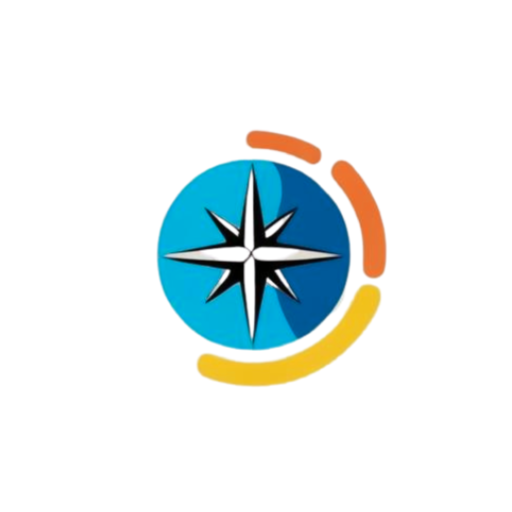Historical Timeline
~2,500 BCE – First human settlement in Finland, primarily along the coasts and inland lakes
1155 (Wednesday, April 24) – Swedish colonization begins with the establishment of the Diocese of Turku
1809 (Thursday, March 19) – Finnish War ends with Finland becoming an autonomous Grand Duchy under the Russian Empire
1917 (Friday, December 6) – Finland declares independence from Russia
1918 (Saturday, January 28) – Finnish Civil War begins between the Red Guards (socialists) and White Guards (conservatives), ending with a White victory
1939–1944 (Winter War and Continuation War) – Winter War (1939-1940): Finland successfully defends itself against Soviet invasion, followed by the Continuation War (1941-1944) as part of the Axis powers during World War II
1944 (Saturday, September 19) – Armistice with Soviet Union: Finland cedes significant territory, leading to the relocation of thousands of Finns from the ceded areas
1952 (Tuesday, July 15) – Helsinki hosts the Summer Olympics
1995 (Wednesday, January 1) – Finland joins the European Union
2000 (Saturday, December 9) – Saami people receive official language status in Finland
2007 (Monday, March 26) – Finland ranks first in the UN’s Human Development Index
2008 (Monday, May 5) – Severe flooding in the southern and central regions of Finland
2010 (Friday, May 7) – Eruption of Eyjafjallajökull volcano in Iceland disrupts air travel to and from Finland
2014 (Friday, February 28) – Severe winter storms in Finland cause extensive damage to infrastructure, including power outages
August 2018 (Tuesday, August 7) – Forest fires in central and northern Finland due to exceptionally hot and dry summer
December 2020 (Tuesday, December 8) – Record-breaking storm hits Finland, causing widespread power outages and flooding
2021 (Wednesday, March 10) – Major flooding in Helsinki due to record rainfall
2022 (Thursday, December 15) – Severe winter storm leads to heavy snowfall and transportation disruption across the country
July 2023 (Monday, July 10) – Extreme heatwave causes widespread wildfires in southern Finland, exacerbated by dry conditions
General Information
Continent: Europe (Northern Europe)
Location: Located in Northern Europe, bordered by Sweden (west), Russia (east), and Norway (north); the southern border is the Gulf of Finland, across from Estonia.
Capital: Helsinki
Language: Finnish (official), Swedish (official), Sámi (official in certain regions)
Currency: Euro (€)
Population: ~5.5 million (last updated: April 2025)
Time Zone: Eastern European Time (EET, UTC+2), Eastern European Summer Time (EEST, UTC+3 during daylight saving time)
Topography
Borders: Sweden (west), Russia (east), Norway (north), Gulf of Finland (south)
Landscape: Mostly flat with many forests and lakes, rolling hills, and vast swamps
Major Rivers: Kemijoki, Tornionjoki, Kymi River, Vuoksi River
Major Mountains: Mount Halti (highest), Ylläs, Saana
Deserts: None
Lakes: Lake Saimaa, Lake Päijänne, Lake Inari, Lake Oulujärvi
Volcanoes: Karelian Volcanoes (inactive)
Highest Point: Mount Halti – 1,324 m (4,344 ft)
Lowest Point: Lake Ladoga – 0 m (sea level)
Climate: Subarctic climate in the north, temperate climate in the south; cold winters with heavy snow and mild summers
Geological Features: Rocky terrain, numerous lakes (over 188,000), part of the Baltic Shield, forests, and glacial features
Demography
Ethnic Groups: Finnish (approx. 93%), Swedish (5%), other (2%)
Religion: Evangelical Lutheran Church of Finland (approx. 70%), Eastern Orthodox Church (1.1%), and other religions
Urban Population: ~85% (last updated: 2023)
Population Notes: Finland has a high quality of life and one of the highest literacy rates in the world
Culture
Famous For: Sauna culture, winter sports, Finnish design (e.g., Alvar Aalto), and innovative technologies (e.g., Nokia, gaming industry)
Cuisine: Karjalanpiirakka (Karelian pasty), Kalakukko (fish pie), Ruisleipä (rye bread), Lohikeitto (salmon soup), Salmiakki (salty liquorice)
Arts: Finnish music (including composers like Jean Sibelius), literature (e.g., the epic Kalevala), visual arts (e.g., Akseli Gallen-Kallela)
Sports: Ice hockey, skiing, basketball, athletics, and Pesäpallo (Finnish baseball)
Economy
Economy Type: Highly industrialized, mixed economy, with a strong welfare state
GDP: Approx. $300 billion USD (last updated: 2024)
Major Industries: Machinery, electronics, forestry, paper products, chemicals, metals
Key Exports: Machinery, electronics, paper, chemicals, timber, metals
Unemployment Rate: ~7.5% (last updated: 2024)
Economic Regions: Strong industrial base in southern Finland (Helsinki area), forestry in central Finland, northern regions focus on mining and energy
Government
Government Type: Parliamentary republic
Head of State: President Sauli Niinistö (as of April 2025)
Head of Government: Prime Minister Sanna Marin (as of April 2025)
Legislature: Unicameral Parliament (Eduskunta)
Constitution: In effect since 2000, establishing a parliamentary republic with a president as the head of state
Travel Attractions
Helsinki: Helsinki Cathedral, Suomenlinna Fortress, Design District
Lapland: Santa Claus Village, northern lights, Sámi culture
Rovaniemi: Santa Claus Village and the Arctic Circle
Lake Saimaa: Cruises, national parks, and nature reserves
Turku: Finland’s medieval capital, Turku Castle, and the Archipelago Sea
